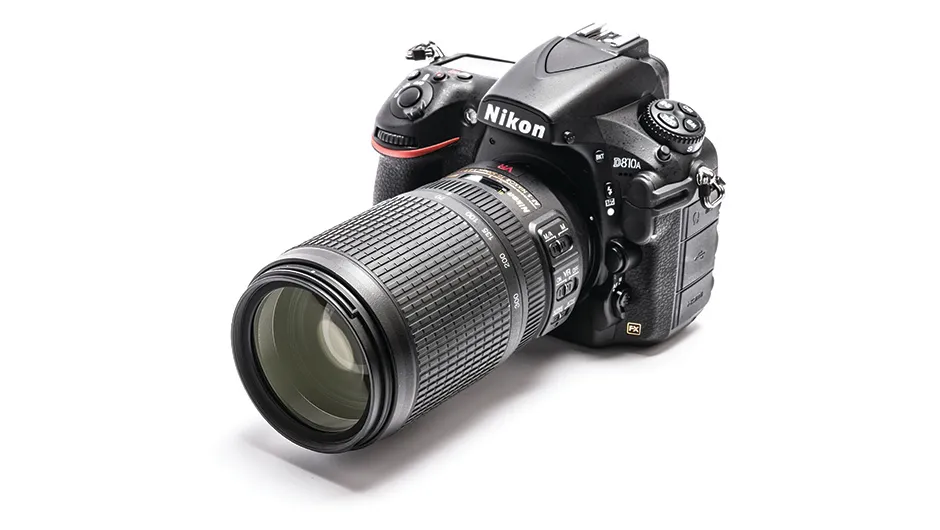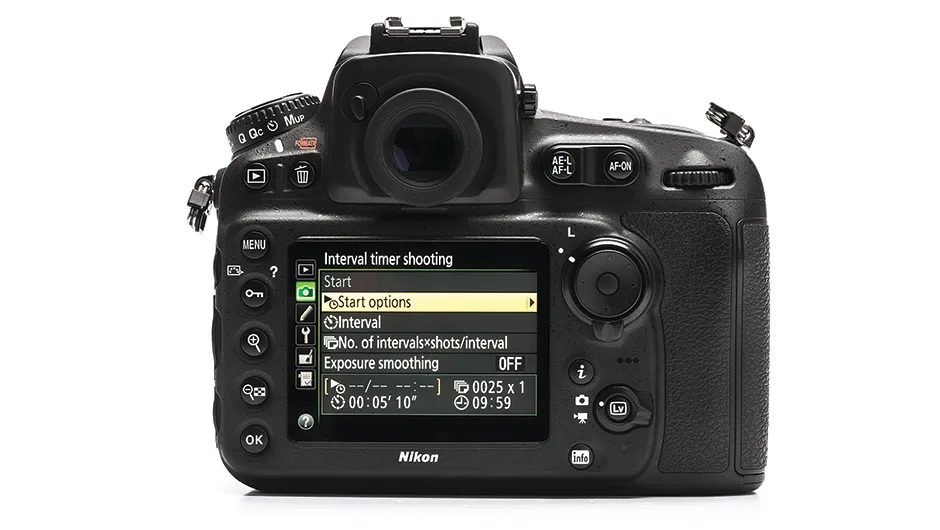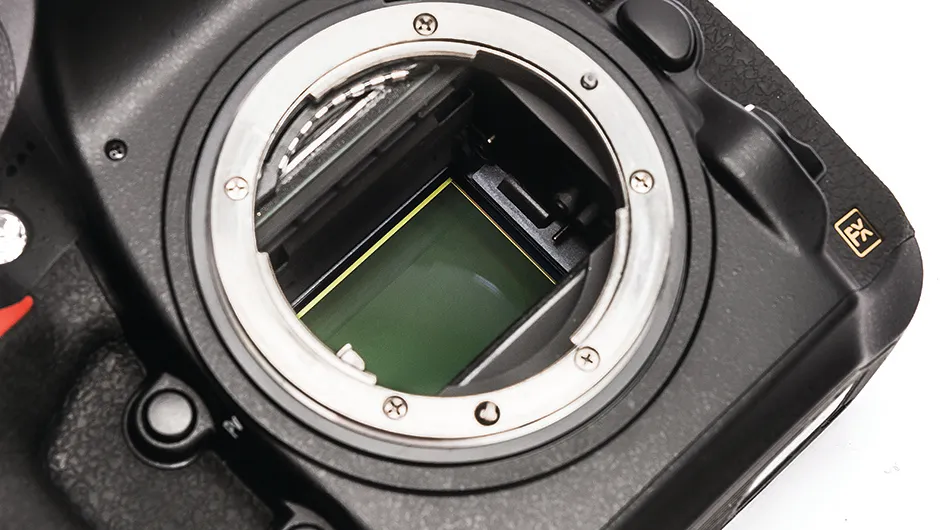Nikon has been somewhat slow to enter the astro imaging market, but has finally done so with the launch of the D810A. The D810A is essentially a modified version of the highly successful D810, and on first inspection the only difference between them is the discrete, white letter ‘A’ on the front of the casing.
But beyond its 36-megapixel resolution, the highest in the Nikon range, the D810A has several astro-specific functions over and above the standard D810, the most interesting and impressive being a modified infrared-cut filter.
Keep your DSLR in good condition with our guide on how to clean a DSLR camera.
Get the most out of your camera with our DSLR guide.

Nikon has also added a new long-exposure manual mode (M*), accessible via the command dial and Mode button.It offers extended exposure times of 60, 120, 180, 300, 600 and 900 seconds.
Coupled with the built-in intervalometer (which is standard on many DSLRs in the Nikon range) all exposure eventualities are covered without the need for an external remote release.
For star trails, the continuous shooting mode can be selected to minimise any potential gaps in the final image.
Live view has been improved to provide a more sensitive display when the exposure time is set above 30 seconds, and we found this very useful for focusing and framing purposes.
We found that the new red-lit display preserved night vision, and using the increased zoom level we found it easy to locate and monitor a star whilst focusing.
You can display the current exposure settings – such as white balance, shutter speed, ISO and aperture – by simply pressing the Info button.
However, we would have preferred an articulated rear display to give a more accessible view when the camera was pointed skyward.It would also have been nice to have illuminated buttons, as seen on the Nikon D4, although this could have had cost implications.

No need for a remote cable
The D810A was easy to set up and we didn’t need to consult the user guide other than to find the setting for front electronic curtain shutter control (it’s in one of the custom menus).This mode eliminates the effects of mechanical vibration.
A camera focal-plane shutter is comprised of two curtains: a front one that opens to start each exposure and a rear one that closes to end it.With the electronic front curtain shutter, exposure is started electronically after the front curtain opens; exposure ends when the rear curtain closes.
Opening the mechanical shutter before the exposure starts eliminates vibrations caused by the shutter, reducing blur.When capturing long exposures we would have liked to have seen a countdown timer, but this can be considered to be a minor niggle.
We initially tested the D810A with a wide-field shot using a Nikkor 14-24mm f/2.8 lens.
A single five-minute exposure at f/2.8 and ISO 1000, tracked using an Astrotrac mount, picked out Barnard’s Loop in Orion and also a hint of the Wizard Nebula in Cepheus, displaying realistic star colours.
For our deep sky test we coupled the D810A to a Takahashi FSQ106.Despite the presence of the first quarter Moon high in the sky, our stacked image of the Heart and Soul Nebulae in Cassiopeia (comprised of 20 exposures at ISO 1000, each five minutes long) showed great detail and good colour.
Nikon’s debut into the astrophotography market has been worth waiting for.The Nikon D810A is a superb camera offering high resolution, great astro functionality and produced some very pleasing images.
If Nikon would add an articulated display screen and a timer countdown display during long exposures, it would be just perfect.
Letting the right light in
All DSLRs have a filter placed in front of the sensor to reduce transmission of red light in order to reproduce colours accurately for daylight shots.
Unfortunately, for astro imaging this also reduces the transmission of the hydrogen-alpha spectral line at 656.28nm, which provides the red colour in many emission nebulae.
A common workaround is to get the DSLR modified by completely removing this filter, however this brings a couple of major disadvantages – firstly, autofocusing can no longer work, and secondly the colour balance of daylight shots is towards the red end of the spectrum.
Nikon’s approach to this problem has been to modify the filter in front of the sensor on the D810A to allow approximately a four times increase in transmission of the hydrogen-alpha region of the spectrum.
Taking daylight shots with the D810A will still result in a slight pink colour cast but this can be fixed quickly in Lightroom or Photoshop using custom presets.

Live View
When long-exposure mode is used with shutter speeds of longer than 30 seconds a preview image equivalent to the one obtained at 30 seconds is displayed; live view images can be magnified up to 23 times.
We found this combination very useful for framing shots and selecting a star for focusing.
Electronic shutter
When the electronic front curtain (selectable in ‘Mup’ mode) is enabled instead of the mechanical front curtain, exposure timing is performed electronically, thus eliminating the source of mechanical vibration.
We found this to produce sharper images when using longer focal length lenses or telescopes.
Intervalometer
The intervalometer allows up to 9,999 frames to be shot in a sequence, something we found very useful for setting up timelapse and star trail sequences.
There is also a Timelapse option, which can automatically generate a movie file if you don’t have movie editing software.
Long-exposure manual (M*) mode
Long-exposure manual (M*) mode is an addition to the existing P/S/A/M settings. Shutter speed settings of four, five, eight, 10, 15, 20, 30, 60, 120, 180, 240, 300, 600 and 900 seconds, Bulb and Time are available.
This feature removes the need to use an external timer remote.
Full Frame sensor
The full frame sensor should be matched with top quality optics for the best results: lenses and telescopes capable of providing a 44mm image circle at least would be best.
The 36.3-megapixel sensor generates 74.5MB RAW files when saved as uncompressed 14-bit images.
Vital stats
- Price: £2699.00
- Weight: 980g
- Supplier: Nikon UK
- Website:www.nikon.co.uk
This review originally appeared in the May 2016 issue of BBC Sky at Night Magazine.